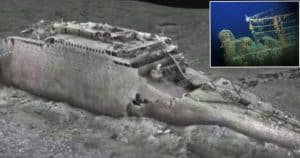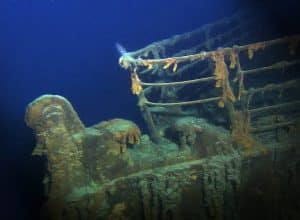When the RMS Titanic sank on April 15, 1912, more than 1,500 people lost their lives in one of the deadliest maritime disasters in history. But over a century later, one haunting mystery remains: why have no human remains ever been found in the wreckage, despite the massive loss of life?

The Titanic was finally discovered in 1985, resting more than 12,000 feet below the surface of the North Atlantic. The site was eerily preserved—personal items like shoes, clothing, and luggage were scattered across the seafloor—but actual human remains were notably absent. Of the 1,500-plus victims, only 337 bodies were ever recovered, and most of those were either buried at sea or laid to rest in Halifax, Nova Scotia.

So what happened to the rest?
The answer lies in the extreme conditions of the deep ocean. At those depths, the water is near freezing and the pressure is immense. Bodies that sank with the ship would have been subjected to rapid decomposition, accelerated by deep-sea bacteria and scavengers. Over time, even bones dissolve. The seawater at the wreck site lacks calcium carbonate—a key element needed to preserve bone tissue. Without it, skeletal remains slowly vanish.

In contrast, places like the Black Sea have preserved ancient human remains for centuries because the water there lacks oxygen and the kinds of marine life that consume organic material. The North Atlantic, however, is a different story.
Meanwhile, the wreck itself is steadily deteriorating. Microbes that feed on the ship’s iron are breaking it down, and scientists estimate that within the next 50 years, the Titanic will collapse into the seafloor completely.
In a tragic twist, the site saw another fatal incident in 2023 when the OceanGate Titan submersible imploded during a tourist dive to view the wreck, killing all five passengers aboard.
The absence of remains at the Titanic site serves as a sobering reminder of the ocean’s power—and the enduring mystery surrounding the ship’s final resting place.




